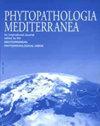乌拉圭苗圃葡萄藤黑足由dactylonecia和ilyonecia引起
IF 1.9
3区 农林科学
Q2 AGRONOMY
引用次数: 0
摘要
黑足病是一种严重的土传真菌病,可引起葡萄幼苗的衰退。病株表现为从砧木基部发育出褐色至深色条纹,树干基部出现木材坏死,根部凹陷坏死,根系生物量减少。一些真菌,通常被称为柱面类无性变形,与黑足有关。苗木在生根繁殖过程中受到侵染,这对病原菌的传播具有重要意义。对乌拉圭生产的苗木中与黑足有关的物种进行了分子、表型和致病性研究。2017 - 2019年,对嫁接到‘1103P’、‘SO4’、‘101-14’、‘3309C’和‘Gravesac’砧木上的181株有根葡萄藤进行了取样,从砧木组织(基端和根)中分离到71株柱状真菌。基于HIS3、TEF和TUB2的多基因系统发育分析,并结合表型分析,共鉴定出dactylonecia和ilyonoecia 5种,其中以macrodidyma最常见,其次是D. novozelandica、D. torresensis、D. palmicola和I. liriodendri。4株伊氏菌分离株未被鉴定到种水平。分离物致病性评估使用健康根' Gravesac '植株。3个月后,所有物种的分离物都感染了植株,造成根系坏死,减少根系生物量。平均而言,39%的准备种植的苗圃葡萄藤受到黑足的影响,强调需要根据当地情况进行的研究,制定综合管理措施,以减少乌拉圭葡萄藤苗圃的黑足发病率。本文章由计算机程序翻译,如有差异,请以英文原文为准。
Black foot in nursery grapevines in Uruguay caused by Dactylonectria and Ilyonectria
Black foot is a serious soilborne fungal disease causing decline of young grapevines. Affected plants show brown to dark streaks developing from the rootstock bases, wood necroses at trunk bases, sunken necrotic lesions on roots, and reduced root biomass. Several fungi, commonly known as Cylindrocarpon-like asexual morphs, have been associated with black foot. Nursery vines are infected during rooting in propagation processes, which is important for dissemination of the pathogens. Species associated with black foot in nursery vines produced in Uruguay were characterized by molecular, phenotypical and pathogenicity studies. From 2017 to 2019, 181 rooted vines grafted onto ‘1103P’, ‘SO4’, ‘101-14’, ‘3309C’ or ‘Gravesac’ rootstocks were sampled, and 71 Cylindrocarpon-like fungal isolates were recovered from rootstock tissues (basal ends and roots). Based on multi-gene phylogenetic analyses of HIS3, TEF and TUB2, and supported by phenotypical characterization, five species of Dactylonectria and Ilyonoectria were identified, with D. macrodidyma being the most prevalent followed by D. novozelandica, D. torresensis, D. palmicola and I. liriodendri. Four Ilyonectria isolates could not be identified to species level. Isolate pathogenicity was assessed using healthy rooted ‘Gravesac’ plants. After three months, isolates of all species infected the plants, causing necrotic lesions on roots and reducing root biomass. On average, 39% of ready-to-plant nursery vines were affected by black foot, emphasizing the need to develop integrated management to reduce black foot incidence in Uruguayan grapevine nurseries, based on studies under local conditions.
求助全文
通过发布文献求助,成功后即可免费获取论文全文。
去求助
来源期刊

Phytopathologia Mediterranea
生物-植物科学
CiteScore
4.40
自引率
8.30%
发文量
28
审稿时长
6-12 weeks
期刊介绍:
Phytopathologia Mediterranea is an international journal edited by the Mediterranean Phytopathological Union. The journal’s mission is the promotion of plant health for Mediterranean crops, climate and regions, safe food production, and the transfer of new knowledge on plant diseases and their sustainable management.
The journal deals with all areas of plant pathology, including etiology, epidemiology, disease control, biochemical and physiological aspects, and utilization of molecular technologies. All types of plant pathogens are covered, including fungi, oomycetes, nematodes, protozoa, bacteria, phytoplasmas, viruses, and viroids. The journal also gives a special attention to research on mycotoxins, biological and integrated management of plant diseases, and the use of natural substances in disease and weed control. The journal focuses on pathology of Mediterranean crops grown throughout the world.
The Editorial Board of Phytopathologia Mediterranea has recently been reorganised, under two Editors-in-Chief and with an increased number of editors.
 求助内容:
求助内容: 应助结果提醒方式:
应助结果提醒方式:


